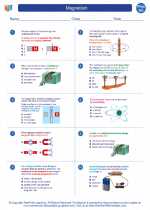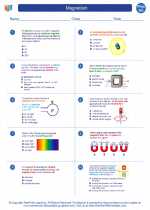Competition in Physics
Competition is a fundamental concept in physics that describes the interaction between two or more objects or systems that are vying for the same resources or space. In the study of physics, competition can manifest in various forms, such as competitive forces, energy competition, and competitive interactions between particles or systems.
Competitive Forces
One of the key aspects of competition in physics is the interplay of forces between objects. When two or more objects exert forces on each other, they are engaged in a competitive interaction. This can be seen in scenarios such as gravitational attraction between celestial bodies, electrical repulsion between charged particles, or tension in a taut rope pulled by two individuals in opposite directions.
Energy Competition
Another important aspect of competition in physics is the competition for energy. In physical systems, energy is a valuable resource that can be transferred, converted, or stored. When multiple objects or systems are involved, they may compete for the available energy, leading to dynamic interactions and outcomes. For example, in a mechanical system, different components may compete for kinetic energy, potential energy, or thermal energy, leading to complex and competitive energy transfers within the system.
Competitive Interactions
At the particle level, competition can arise in the interactions between subatomic particles, atoms, or molecules. For instance, in nuclear reactions, particles may compete for available energy and momentum, leading to the formation of new particles or the transformation of existing ones.
Study Guide
To gain a thorough understanding of competition in physics, it is essential to focus on the following key areas:
- Forces: Study the different types of forces, such as gravitational, electromagnetic, and nuclear forces, and how they give rise to competitive interactions between objects.
- Energy: Explore the concept of energy and its various forms, including kinetic, potential, and thermal energy. Understand how energy competition influences the behavior of physical systems.
- Particle Interactions: Investigate the competitive interactions between subatomic particles, atoms, and molecules, and how these interactions contribute to the overall behavior of matter and energy.
- Real-World Applications: Look for real-world examples of competition in physics, such as in sports, engineering, and natural phenomena, to appreciate the practical implications of competitive phenomena in the physical world.
By delving into these areas and practicing related problems and experiments, students can develop a comprehensive understanding of competition in physics and its significance in the natural world.



